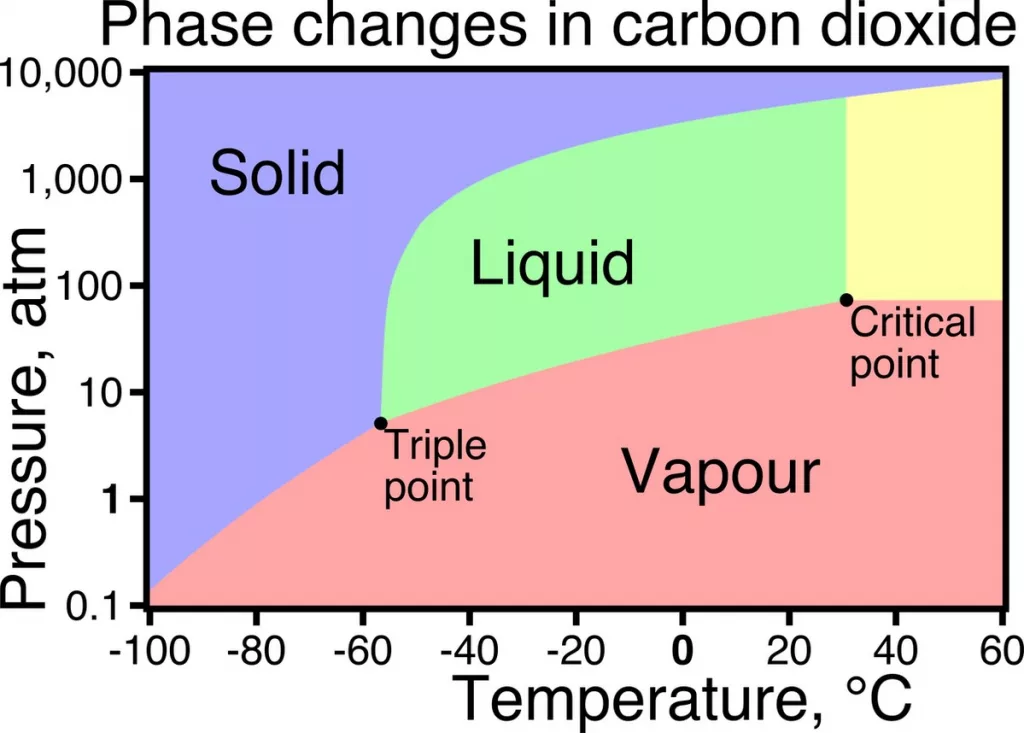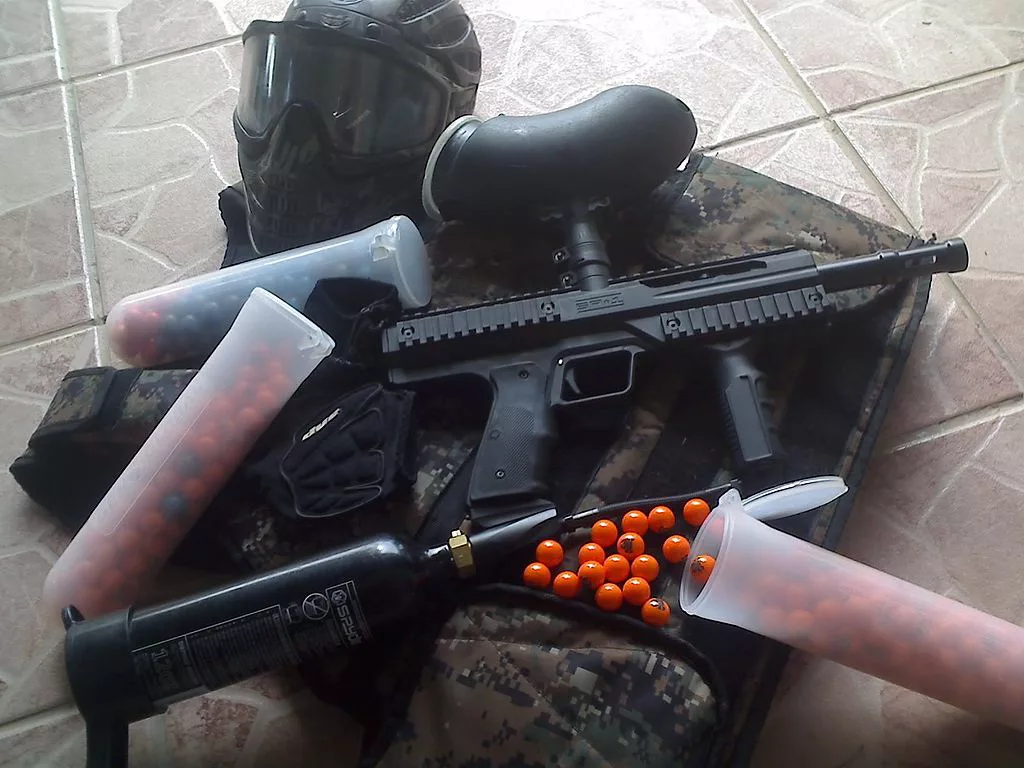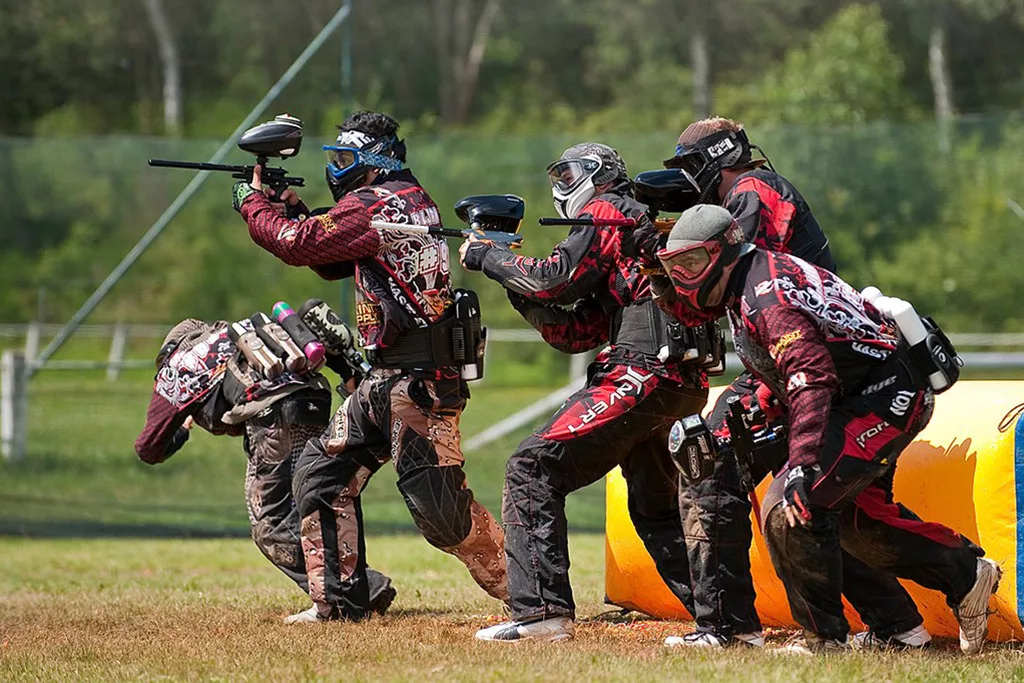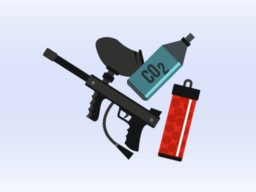Why HPA is Taking Over
HPA is the new kid on the block, but CO2 isn’t going down quietly. In this comparison, we explore the advantages each has.
When you pull your paintball marker’s trigger, you expect a projectile to fire out, whizzing downfield at your unsuspecting, soon-to-be-eliminated target.
In traditional firearms, that projectile is propelled by an explosion in the barrel.
In paintball or airsoft guns, the projectile is propelled by the released of gas under pressure.
Today, there are three common gasses used with both paintball markers and airsoft guns:
- Carbon dioxide (CO2)
- High-pressure air (HPA)
- Green gas (propane)
We’ll ignore green gas for now, since it’s much less popular, and look at the two most common types in use: CO2 and HPA.
CO2 vs HPA: A Brief History
When paintball was first invented in the 1960s, all paintball guns used CO2. It wasn’t until the 1990s that HPA guns started gaining popularity as a high-upside alternative to CO2, because CO2 has a major flaw.
When CO2 is compressed, extreme pressure inside the tank (around 850 PSI or pound-force per square inch) converts it from a gas to a liquid. When you pull the trigger to fire a paintball, the CO2 in the tank undergoes a phase change from liquid back to gas. In order for this phase change to occur properly (by which we mean delivering the right amount of pressure behind your shot), the liquid CO2 needs to be around 75°F.
Interestingly, CO2 cools down as it expands. In fact, for every 1°F drop in temperature, the internal pressure of a CO2 tank decreases by 11 PSI. When you’re firing shot after shot in rapid succession, that’s a lot of expansion happening in a short period of time. Your liquid CO2 gets cooler and cooler with each shot, delivering decreased pressures each time.
For pump and mechanical paintball guns, which fire one shot for each trigger pull, this often is a moot point. Usually, you just aren’t firing your paintball gun quickly enough for it to make a serious difference.

A Use Case For HPA
But for an electronic paintball gun with high-frequency firing modes like three-shot burst, ramping, and fully-automatic, this liquid-to-gas phase change can have a major impact. You can read more about the 5 key differences between electronic vs manual paintball guns.
Remember when I said HPA started gaining popularity in the 1990s? Not coincidentally, the first electronic paintball guns hit the market in 1996 with the WDP Angel and Smart Parts Shocker.
This major drawback of CO2 isn’t a problem with HPA, also called Nitro or N2 because it’s simply compressed air, which is 78% nitrogen. HPA tanks are pressurized to either 3000 PSI or 4500 PSI, and at both of those pressures, air is able to remain in its gaseous state. The lack of a phase change means you get consistent pressures as air is released with each shot.
HPA tanks are sold at two pressures: 3000 PSI and 4500 PSI. Despite the pressure differences, both still have the same output pressure of 450-850 PSI. When air is released from the HPA tank, it’s down-regulated using a regulator, giving you consistent firing speeds every time.
Then what’s the difference between 3000 PSI and 4500 PSI HPA tanks? Good question. The answer is the volume of gas. A 4500 PSI HPA tank has more air compressed into the same size space, giving you a higher pressure and a longer useful life (more shots per fill). That doesn’t mean CO2 is a terrible alternative. In this next section, let’s take a quick look at the advantages of each of these paintball air tanks.

Two Advantages of CO2
CO2 is more affordable. A typical 20 oz CO2 tank costs $20-$25 and can fire around 1,000 paintballs (enough for two full days on the field). And as we explain in our guide to paintball costs, CO2 refills are around $4 each time. By contrast HPA tanks start at $40 and can range into the $200s with refills generally $5-$10 at your local field. Of note, HPA’s refill fee is a one-time fee each day for unlimited refills. Sounds great, right? It can be, but consider the next advantage of CO2.
You can get CO2 refills at all kinds of shops, not just paintball fields or specialty stores. Welding supply shops (like Airgas), fire extinguisher shops, and sporting goods store (like Dick’s) are three common places where paintballers refill their CO2 cartridges. By contrast, HPA refill options are more limited, generally just paintball supply shops or fields. Standard compressors just can’t reach the pressures required.
Four Advantages of HPA
Consistency is the biggest advantage of HPA. It fires with the same pressure every time regardless of your firing mode or the weather. CO2’s firing pressure varies, especially when playing in cool, damp conditions or when firing with high frequency.
HPA is virtually required on electronic paintball markers due to the aforementioned high-frequency firing modes. If you’re a competitive speedball player, having an electronic marker is basically a requirement, and that means you’ll be dealing with HPA. CO2 limits you to semi-automatic mechanical markers.
Piggybacking on the above, HPA gives you more flexibility. Most electronic guns require HPA, and mechanical guns can use either CO2 or HPA.
All you need for HPA refills is a high-pressure compressor. With CO2 tanks, you also need a liquid CO2 supply, specific fittings, and some specialized training.

Both CO2 and HPA have their place in today’s paintball world, but, increasingly, HPA is taking over. This paintball field flat-out banned CO2 in favor of HPA for three reasons:
- CO2 tanks are more expensive in the long run due to supply and delivery costs of liquid CO2.
- CO2 refills are more time-consuming because you need specialized fittings and training.
- HPA performs more reliably under all weather conditions and firing speeds.
That doesn’t mean you’re wrong for choosing CO2. For beginners just getting into the sport or infrequent players using mechanical paintball guns, CO2 is a fine option. Here’s the deal: if you’re a serious paintball player, especially speedball, HPA is your present and your future.
Frequently Asked Questions
What are the advantages of CO2?
1. CO2 is more affordable.
2. You can get CO2 refills at all kinds of shops, not just paintball fields or specialty stores.
What are the advantages of HPA?
1. Consistency is the biggest advantage of HPA.
2. HPA is virtually required on electronic paintball markers due to the aforementioned high-frequency firing modes.
3. HPA gives you more flexibility.
4. All you need for HPA refills is a high-pressure compressor.
